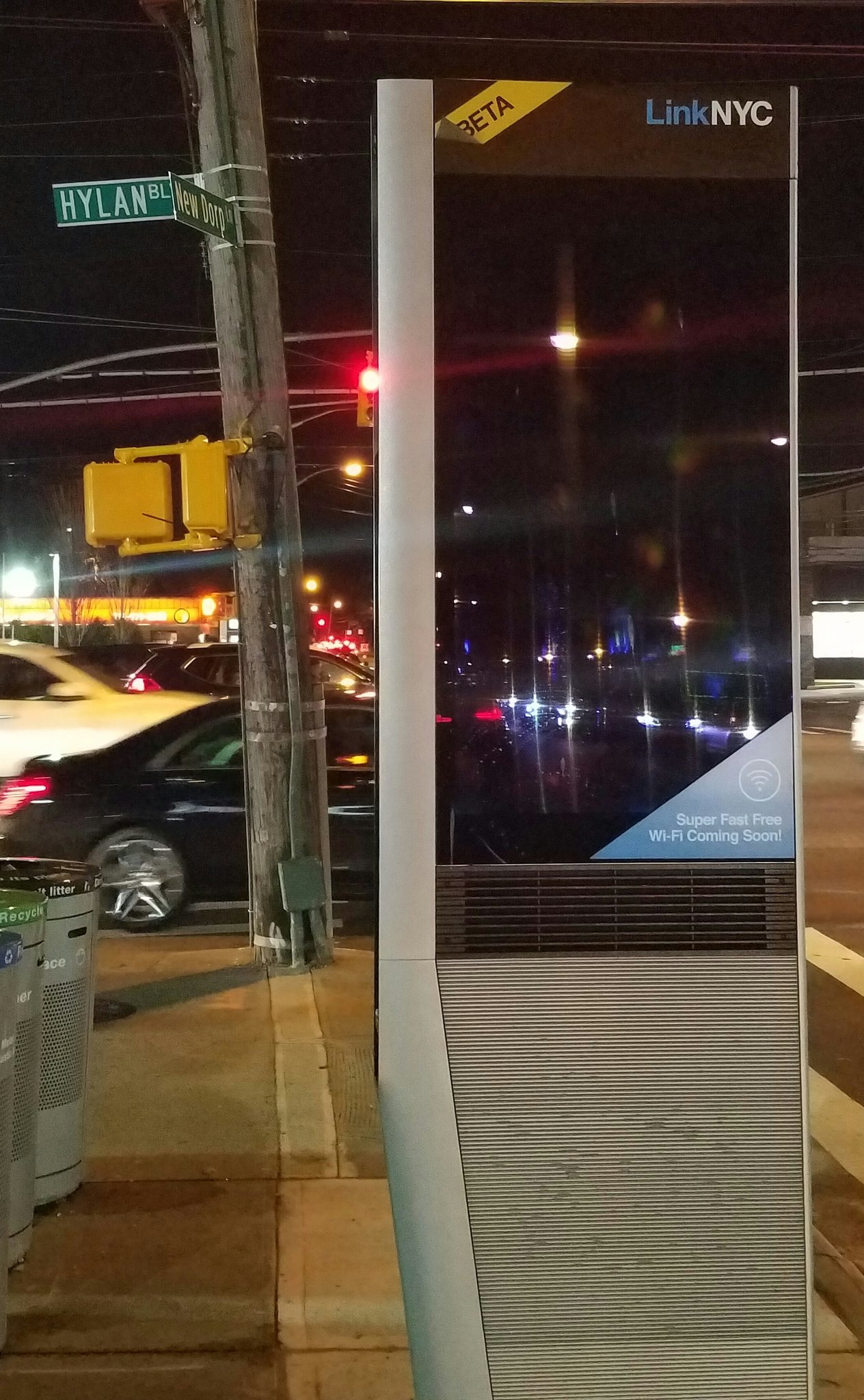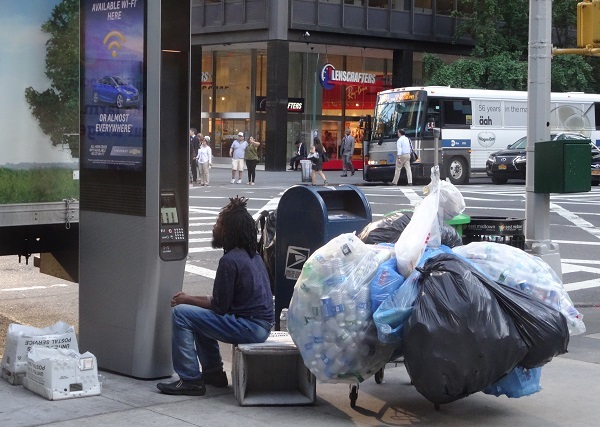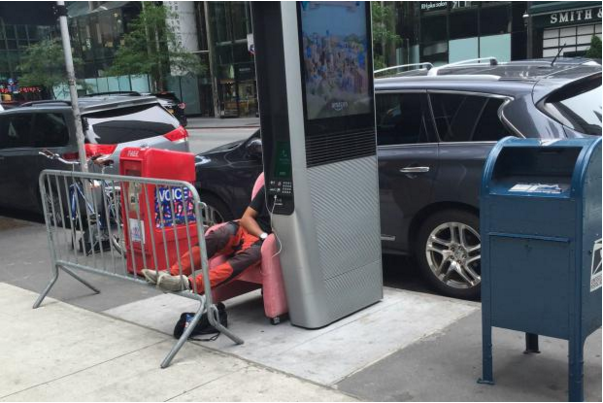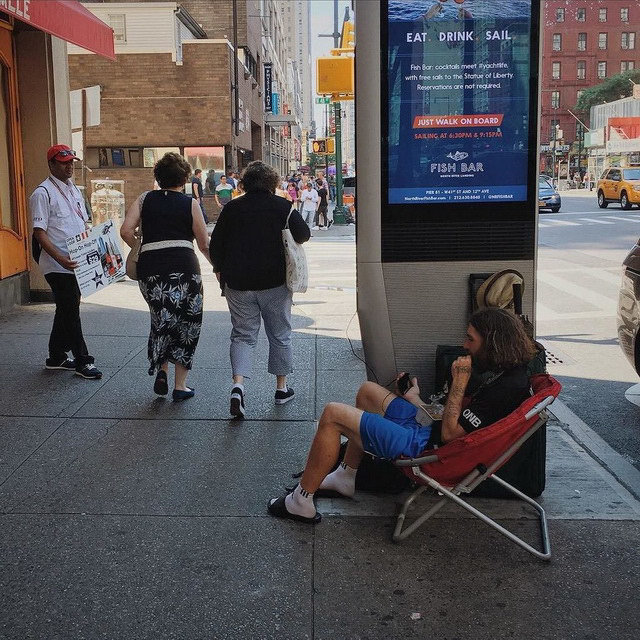Wi-Fi almost turned New York in the trash

More than one million New Yorkers have registered to use LinkNYC’s free hotline network located in several districts of the city. The network of access points, which began operating in the city less than a year ago, provides everyone who wants free calls within the country, Wi-Fi, the ability to recharge the smartphone and call the rescue service. On average, 40 thousand people are registered in the hot-posts system a week; the number of Internet sessions reaches four million. However, just a few months ago, LinkNYC became a source of a real headache for city residents. Access points, literally, were occupied by homeless people and drug dealers, as if returning the “Big Apple” to the eighties crime.
A bit of history
Before you begin the story about LinkNYC you should go back to basics. New York is a populous city through the streets of which millions of people ply daily. Therefore, the means of communication available to everyone played important here. This is an opportunity to find each other and promptly report the incident to various city services. For several decades, this role in the “Big Apple” has been played by a network of street payphones. Yes, those same street machines, familiar to almost everyone who saw Hollywood movies.

')
The peak of the spread of payphones in New York fell on the eighties. Then in the city located about 45 thousand telephone booths. The emergence and rapid development of mobile communications significantly reduced the need of residents of the metropolis for street phones. By 2011, the number of telephone booths was reduced to 15,000, some of which were not exploited at all.


As a result, unclaimed telephone booths became the locations of various asocial elements. In the payphones, the homeless and drug addicts were consuming and using drugs, which caused a lot of inconvenience to decent taxpayers.


On the elimination of outdated payphones finally started talking at the official level. But even dismantling is costly. In 2012, the gradual introduction of modern technologies began - touch panels with access to the Internet began to be installed next to the phones.
Internet to all
The resolution of the issue was taken by the new head of the metropolis, Bill de Blasio, who organized a competition for the best project of the urban network of access points. The winner was Link NYC. The network of hot-posts as if embodied the city of the future from science fiction films.


Elegant booth with a screen on which continuous flash commercials, connected to fiber optic communications. Connection speed reaches 1 Gb / s. According to the project, the network of access points will reach 7.5 thousand. Plans to invest in the project about 200 million dollars. To recoup such a large-scale project, the city is going to with the help of advertising broadcast from kiosk screens.

Installing LinkNYC Kiosk
The connection to the network is simple: the gadget fixes the network, the user needs to go through a simple registration procedure, after which you can safely use the network. You can use the network on the move, as LinkNYC implements the ability to seamlessly switch from one point to another.
If your smartphone suddenly sat down, it can be recharged via the USB connector located on the panel booths. There is also a headphone jack, if the passerby needs a private call. Not without the emergency call button 911 and others.
Interiors LinkNYC
While the smartphone is charging, you can use the built-in search engine using the touch screen. In the future, it is the built-in search engine that will become a stumbling block because of which LinkNYC will be under threat of liquidation.
Homeless porn
Despite the fact that the construction of “kiosks with the Internet” provides reliable protection against vandals, they began to be installed in relatively quiet areas of the city. About four hundred points were found in the Chelsea and Upper East Side areas.

Map of access points in Chelsea
However, despite the extensive public relations campaign and the many grateful responses of residents and tourists, once well-off districts began to slowly turn into a haven for marginal elements. Access points became a beacon for the homeless and drug addicts, where you could get free internet at a good speed, even without having a gadget for this. As a result, all this “badly scented” public literally settled next to LinkNYC kiosks, listening to music all day and night and watching pornography from screens in broad daylight.


Residents of the Upper East Side complained to the police that they were selling drugs near the access points. The homeless arrange shelters near the stalls, drinking alcohol and scattering garbage around.


Similar complaints came from Chelsea, where LinkNYC also attracted a motley crowd of drug dealers, drunks and outspoken street psychopaths.
The laudatory odes of the press and residents gradually changed criticism and complaints towards the authorities, so that they would stop the mess on the streets, which reminded residents of the eighties chaos.
To find out the attitude of the residents to the new project, one of the publications decided to find out the public attitude to LinkNYC. The results were not in favor of the new city services.
“This is a real problem when you cannot walk in the evening without stumbling over someone's sleeping body. Kiosks are simply unrealistic to use because dangerous people constantly gather around them who drink and watch porn in front of passing children , ”writes a resident of the Chelsea district under the nickname SarahD.


“The municipality was clearly not friends with the head when this idea was born to them. We actually gave the homeless a cozy place where you can get together for taking drugs, watching porn. The homeless there celebrate need, fall asleep and the next day repeat it all again. It’s not to say that it’s impossible to use the access points for an ordinary passerby in such conditions , ”the user writes under the nickname thebeatbook.

“At first, I thought it was a good idea. But when homeless people and drug addicts from East Harlem began to flock to us, I began to think differently. Now every day I go out of the house, and I watch a lot of homeless people and drug addicts who sit next to these kiosks on drawers, coffee chairs, boxes and entertain themselves by listening to music and watching movies. People who do not lead an asocial lifestyle simply cannot physically approach these kiosks and use them, ” Eluv67 shares her impressions.

The last straw for the residents of the city were regular pornossenasy, which the homeless staged right on the interactive screens of kiosks, not embarrassed by passers-by.

As a result, the authorities were forced to cancel some functions in the work of LincNYC kiosks, disabling access to the search engine on the interactive screen, and therefore the ability to view obscene videos and listen to music.

Now users can only charge the phone, view a map of the city, make a free call and catch a Wi-Fi signal on their smartphone. Now the problem with the homeless occupying the access point is gone. But after all, in New York, winter.
Therefore, no one guarantees that with the onset of summer around the stalls LinkNYC again will not begin to grow tent cities.
Source: https://habr.com/ru/post/373109/
All Articles